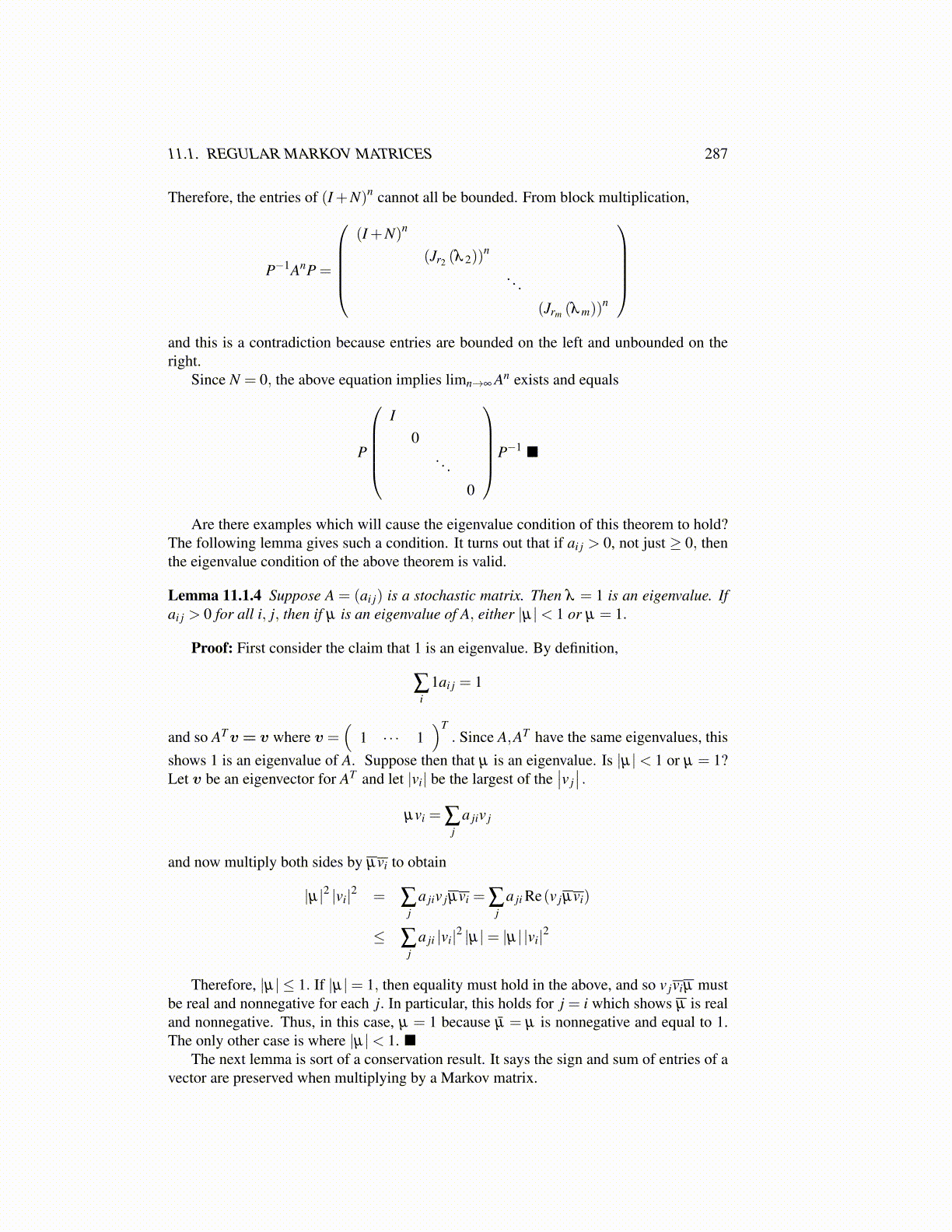
11.1. REGULAR MARKOV MATRICES 287
Therefore, the entries of (I +N)n cannot all be bounded. From block multiplication,
P−1AnP =
(I +N)n
(Jr2 (λ 2))n
. . .
(Jrm (λ m))n
and this is a contradiction because entries are bounded on the left and unbounded on theright.
Since N = 0, the above equation implies limn→∞ An exists and equals
P
I
0. . .
0
P−1 ■
Are there examples which will cause the eigenvalue condition of this theorem to hold?The following lemma gives such a condition. It turns out that if ai j > 0, not just ≥ 0, thenthe eigenvalue condition of the above theorem is valid.
Lemma 11.1.4 Suppose A = (ai j) is a stochastic matrix. Then λ = 1 is an eigenvalue. Ifai j > 0 for all i, j, then if µ is an eigenvalue of A, either |µ|< 1 or µ = 1.
Proof: First consider the claim that 1 is an eigenvalue. By definition,
∑i
1ai j = 1
and so ATv = v where v =(
1 · · · 1)T
. Since A,AT have the same eigenvalues, thisshows 1 is an eigenvalue of A. Suppose then that µ is an eigenvalue. Is |µ|< 1 or µ = 1?Let v be an eigenvector for AT and let |vi| be the largest of the
∣∣v j∣∣ .
µvi = ∑j
a jiv j
and now multiply both sides by µvi to obtain
|µ|2 |vi|2 = ∑j
a jiv jµvi = ∑j
a ji Re(v jµvi)
≤ ∑j
a ji |vi|2 |µ|= |µ| |vi|2
Therefore, |µ| ≤ 1. If |µ|= 1, then equality must hold in the above, and so v jviµ mustbe real and nonnegative for each j. In particular, this holds for j = i which shows µ is realand nonnegative. Thus, in this case, µ = 1 because µ̄ = µ is nonnegative and equal to 1.The only other case is where |µ|< 1. ■
The next lemma is sort of a conservation result. It says the sign and sum of entries of avector are preserved when multiplying by a Markov matrix.